Specifics:
Food: Shigemasa Obitsu, Teppan Edo, Japan Pavilion, Epcot
Wine: Amy Meddins, Orgeny Vineyards, Sonoma County, California
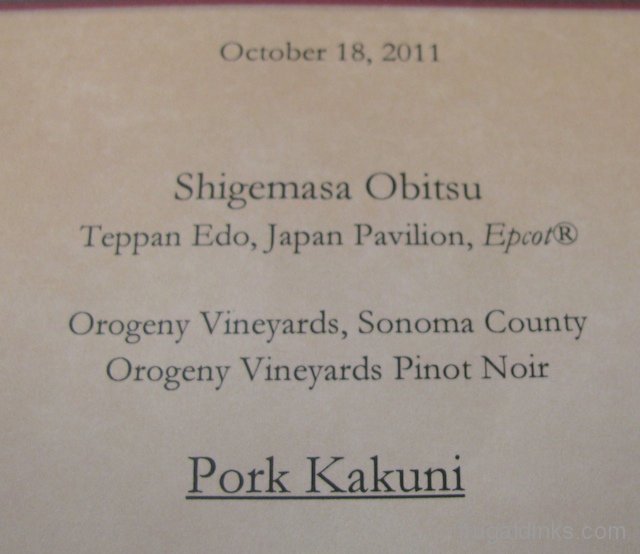
John Ekins was our host yet again.
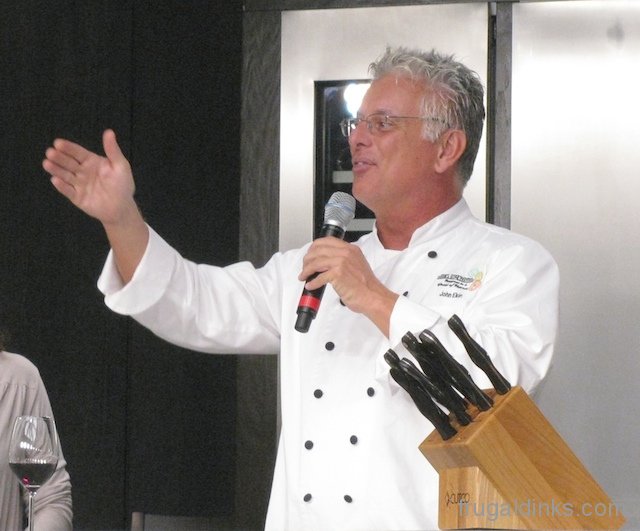
Although we didn’t have a real life vintner with us today, we did have a wine seller from Central Florida who is familiar with Orgeny Vineyards (“orgeny” sounds very similar to “orgasm” promoting many jokes).
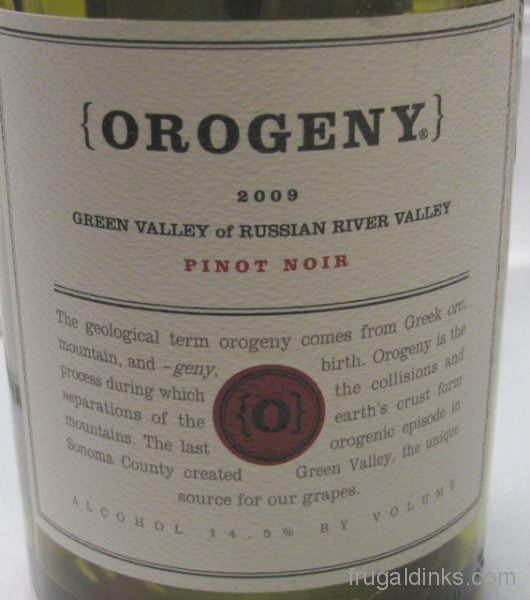
While Amy wasn’t as entertaining and engaging as Greg was earlier in the week, she was very informative and enthusiastic (yeah! Amy!). The day after this presentation, she was going to be presenting a California Chardonnay at the Festival Center.

Amy started with Wine 101…
- Pinot Noir is a grape not a wine
- Chianti is a wine not a grape
- Cabernet, Cabernet Sauvignon, Merlot are all grapes
- Pinot Noir are finicky grapes
- very thin skins
- much lighter wine because of the thin skins – much of a wine’s body comes from the skins
- grown in the Green River Valley of Sonoma – it’s the coldest area of Sonoma & thus well suited for growing thin-skinned Pinot Noir grapes
- Quick Story – “Orgeny” comes from two greek words meaning “mountain/valley” and “birth” – when this wine was getting its start it was customary for wine makers to have “wine lunches” together on a regular basis & one day while trying to decide what to name this new wine, one of the wine makers had brought her husband to the lunch (and he was a geologist), so while everyone else was throwing around names & ideas, he piped up with why not name it “orgeny? it means the birth of a valley and the last orgenic event in California was the creation got the Green River Valley.” Everyone thought it was a wonderful idea & that’s how’s Orgeny was named.
- the Orgeny Vineyards Pinot Noir is very consistent from year to year, there isn’t vintage that particularly stands out as “fabulous” or “less good”
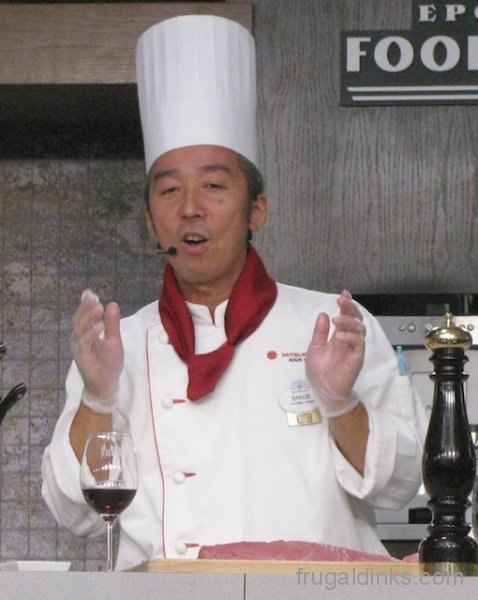
Chef Shige proved to be very entertaining! He didn’t agree with the host simply to be pleasant but wasn’t rude by any means, very good sense of humor. He started cooking teppan at the Japan Pavilion in 1986, left in 1990 to start his own place, and came back in 1996; he’s currently the head teppan chef & yes, he likes teppanyaki. Usually when Chef Shige presents a culinary demonstration during the Food & Wine Festival, he makes either sushi or tempura – this year, he wanted to make something that is considered to be “family food” and it also is available at the Japan kiosk — drumroll, it’s PORK KAKUNI! (you can see our review of the kiosk offering here). “Kakuni” roughly translates to “boiled meat” – it actually refers to the cooking of tougher cuts of meat in a soy sauce based broth. This is a very traditional, family style dish – usually made with pork belly or pork shoulder, not pork tenderloin as Chef Shige is using for his demonstration. Chef Shige decided to NOT use pork belly because “so many people don’t eat fat!” (too bad because this would be really good made with slow cooked pork belly). Since this is a dish that nearly every Japanese family makes, there are variations region by region or family by family, but these are typically very small variations.

- Chef demonstrated how to remove the silverskin from the pork tenderloin
- He suggests having a very high quality knife with small serration – take care of it, don’t need to sharpen it, lasts a long time
- Usually when making a slower/longer cooked dish, Chef prefers tougher and fattier cuts of meat – he’d typically use pork tenderloin for a faster cooked dish like stir fry or sauté
- Chef joked — there wasn’t any green onion for him to use
- Note: use cheap sake if your cooking with it, use good sake if you’re drinking it
- Add soy sauce after the pork has been cooking for about 45 minutes (about half way through the process – otherwise, it makes the meat tough)
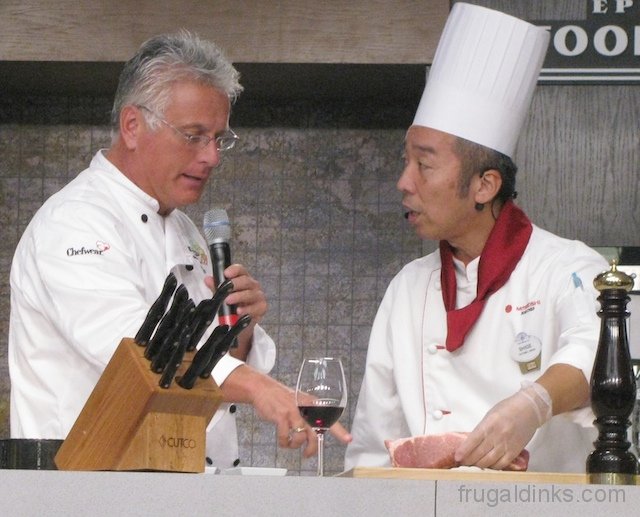
Tasting
Wine
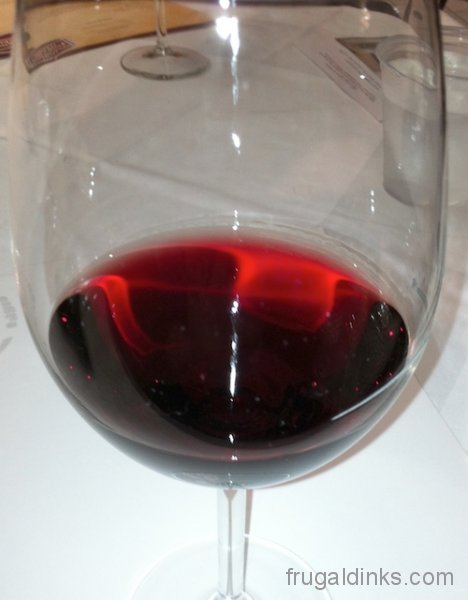
- Without Food
- aroma: lighter than the other reds we’ve had so far; tiny bit of acid; a little dusky & some fruits
- taste: much fruitier in the mouth than the other reds; a little dry but full
- With Food
- wine goes well with the pork kakuni
- nora may like this best of all the wines tasted thus far
Pork Kakuni
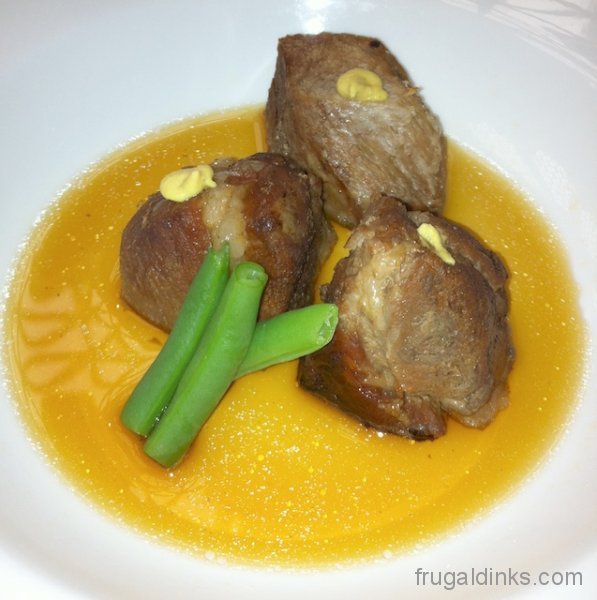
- this was a BIG portion, served warm (not hot) but the meat was a bit cool
- two of nick’s pieces were pretty dried out – most likely because it wasn’t Chef Shige and his fellow chefs from Japan who did all of the cooking and plating and staging of the food
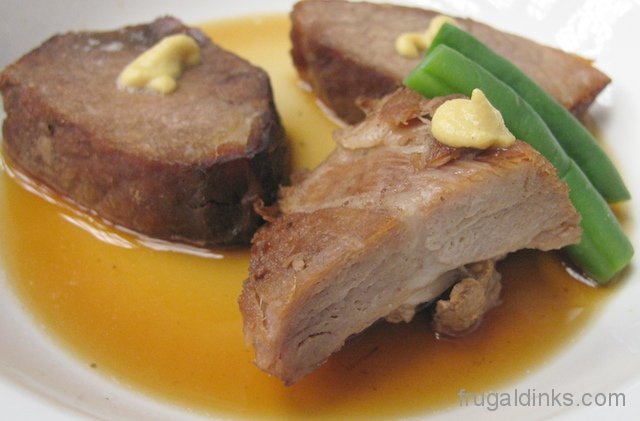
- two of nora’s pieces had very good fat marbling
- flavorful & very good
- this is served at Tokyo Dining as an appetizer (yum)
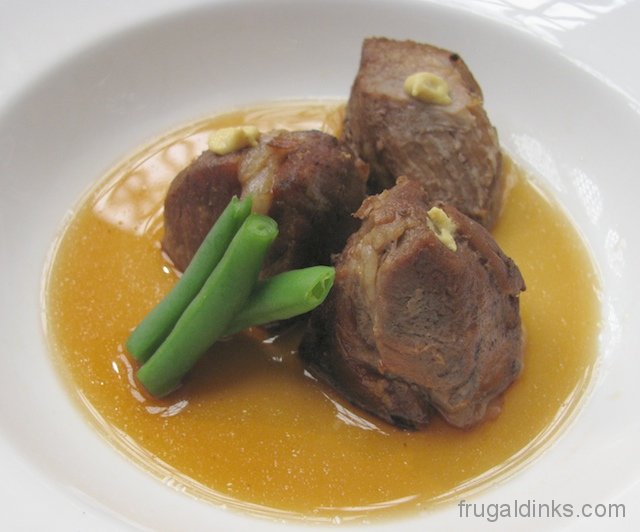
Recipe
Serves 4
- 1 1/2 pounds pork shoulder
- 1/2 once ginger root shredded OR 2 nice thick slices of ginger
- you’re not going to eat or serve the ginger and Chef Shige says that the coins are easier to remove
- the ginger helps with the smells and odors of the meat cooking PLUS they add flavor
- 1 green onion, sliced into 2-3 inch pieces
- you’re not going to eat this either
- green onion adds flavor
- this wasn’t available for the demo & Chef Shige made sure to make a joke of it or maybe he was poking fun at the Food & Wine Festival
- 1/4 cup granulated sugar
- may use less, may need more
- 1/2 cup sake
- 2 cups of water – enough to just cover the pork pieces
- 1/3 cup soy sauce
- Chef says that you don’t really add this right away, you want to cook the pork about halfway before you add the soy sauce
- Cut pork shoulder (boned) into 1 1/2 inch cubes and place in large pan at medium to high heat. Sear the pork cubes until brown, add green onions and cook until translucent.
- Chef says – no, this is wrong – cut the meat into larger cubes, like 2″ based on what we ate
- Chef says – no, you don’t have to sear or brown the pork
- Chef says – no, you don’t want to cook the onion in the pan, you want the onion in with the broth
- Add sake directly to the pot, make sure to scrape any bits from the bottom of the pot (that is, if you sear it).
- Lower heat to simmer, add all remaining ingredients
- remember, Chef says – don’t add the soy sauce until about halfway through cooking
- remember, Chef says – add water to cover the meat
- Cover with a lid to avoid any steam from escaping. Simmer for 1 1/2 to 2 hours or until fork tender
- remember that soy sauce 🙂
- Remove from heat and place pieces with braising liquid on a plate. Garnish with chopped green onion & hot mustard.
A few last comments from the Chef…
- pork and mustard fit together
- wasabi doesn’t fit this dish
- use the broth/liquid for boiling eggs – very good
